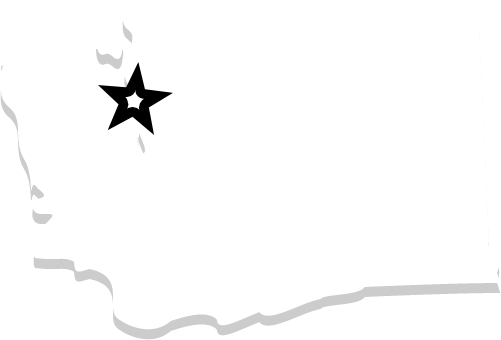6 Small Plumbing Maintenance Projects
CALL (206) 789-4944
Serving the Greater Seattle Area
Nobody enjoys having to spend lots of time and money bringing in a plumber to fix a problem in the home. In some cases that dreaded call ends up being unavoidable, but homeowners can reduce the chances of having to make the call if they do basic plumbing maintenance on their own.
With the right tools and a little bit of know-how, the six small plumbing projects below can easily be performed by the average homeowner.
1. Adding a Saddle Valve
Saddle valves are added to pipes as a way of increasing water to a supply line without having to do any soldering. They can be applied to various kinds of pipes, including copper. This procedure is often done to add a water supply to refrigerators that have built-in ice dispensers, but it has many other practical applications.
To add a saddle valve to a line, the following tools will be necessary: Teflon or pipe dope (joint compound), a rubber gasket, a bucket, pliers, tubing, and a self-piercing valve.
2. Heat Taping Pipes
For homeowners who live in regions that have cold winters, heat tape can be a lifesaver, because it insulates and heats pipes that might otherwise freeze. Since water expands when it freezes, frozen pipes can become burst pipes. At the very least, burst pipes involve having to pay to replace the pipes; at the worst, they can cause irreparable water damage to a home and bring mold in its wake.
There are four types of heat tape:
- self-regulating (which has a cable in it that regulates heat)
- non-regulating (heat tape regulated by a thermostat)
- heated water hoses (which heat up in cold weather and can be shut off in warm weather) and
- automatic heat cable (heat tape that can be plugged into an outlet)
3. Soldering Copper Pipes
Though it might sound like a daunting task, with a bit of research and good instruction, most homeowners are usually capable of soldering (which is to say, mending with a hot flame) their own pipes. In order to do so, you will first have to measure, cut, and clean the pipe with a brush. Then the pipe is heated with a torch and joined together with another pipe.
In order to solder a pipe, you will need: a measuring tool, a copper pipe cutter, a cleaning brush, a spray bottle, flame protector, and a fire extinguisher.
4. Capping a Water Pipe
When renovations or repairs require a pipe to be taken apart, a cap is applied to it in order to prevent water from draining during the time it is being disconnected. This prevents a huge mess from occurring! In order to cap a pipe, water must be cut off from the house; then the line must be cut and sealed off.
5. Testing Water Pressure
Homeowners should test their water pressure a few times a year. The procedure is one of the simplest plumbing tasks that can be performed. All you need is a pressure gauge, which can be attached to your home’s outside hose bib.
Once the gauge is attached, you can turn on the hose bib full blast and the gauge will provide a reading of your home’s water pressure.
6. Winterizing Outdoor Faucets
The task of winterizing all your outdoor faucets is a great way to avoid many of the plumbing disasters that can result from a cold winter. In order to winterize, it is important to drain outdoor valves of all water, shut them off, and then protect them with a hose bib cover.
Frost-resistant hose bib covers are best because they will not freeze on the outside. They can be found at most hardware stores.
CALL (206) 789-4944
Serving the Greater Seattle Area





